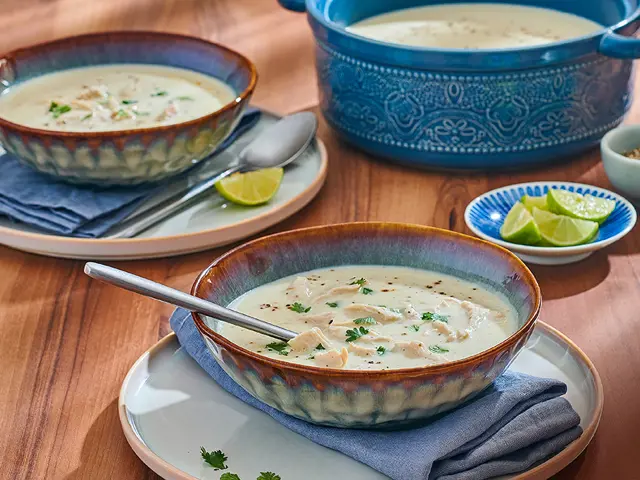


When refrigerated, seafood can generally be reheated and consumed no more than 4-5 days after it was first prepared, and seafood soup is no different. As always, trust your sense of smell before deciding whether to reheat and consume. The usual risks when reheating seafood should be considered and it’s important to check for any signs of expiry, such as a change in smell. Store your seafood soup in a sealable container to avoid spoiling its rich flavour and taste. Reheat it slowly and over a low heat, without boiling, until it becomes piping hot and ready to serve.
Overcooked prawns can easily undo hours of hard work in the kitchen preparing and making your seafood soup. Overcooked prawns are both tough to chew and flavorless, so it’s important to pay close attention to timing when following your recipe – making sure your prawns are well cooked but not overcooked. Typically, you should cook your prawns on a low heat for around 2-3 minutes until they turn into their usual pink and white color. You should also make sure to add your prawns at the very last step, making sure your prawns pack the most taste possible.
As with all seafood and meats, it’s important that you rinse prawns and thoroughly under cold water before handling, cooking or eating. This will help you not only to remove any residue sand or dirt from the prawns, but more importantly most bacteria present on the seafood. However, keep in mind that this will not remove all bacteria and it’s still vital that you follow food safety guidelines when it comes to both personal hygiene, as well as cooking, storing and reheating seafood.
The best way to know when shrimp, prawns and tiger prawns are considered cooked is to pay close attention to their color, touch and smell. When cooked prawns and tiger prawns will turn into their typical pink and white colors, as well as becoming firm to the touch and emitting a sweet-smelling aroma. If you’re still not sure and want to be on the safe side, use a thermometer to check the temperature. The temperature at the thickest part of the prawn should be at least 63 °C.
Seafood soup can come in many different variants, with many different ingredients and seafood choices. The first thing you need to decide is which seafood soup is the right one for you.
When it comes to seafood combinations, the list is almost endless. Whether you choose to use shellfish such as crab, lobster, prawns, or mussels; or fish such as cod, haddock or salmon. At the end of the day, it all depends on your personal taste and which ingredients are available, in season or the most affordable for your budget.
For adults and children alike, skewers are the perfect way to add an extra touch of fun and taste to your dinner table.
Not only are they quick, convenient and social, but they also offer a culinary world of different taste combinations – whether you’re mixing different vegetables, fruits, meats or, as in this case, seafood. Each skewer is unique and can make your mealtimes anything but boring!
There is no one definitive seafood soup and every combination is unique. Popular choices include shellfish such as crab, lobster, prawn, and mussels, as well as larger fish such as cod, haddock and salmon. While fresh catch is known to pack the most taste and nutritional value, frozen and packaged alternatives are often more widely available and kinder to the budget.
It’s not just the combination of seafood and fish that can bring out the taste of your seafood soup, but herbs and seasonings can add an aromatic punch that enhances the taste of your other ingredients.
Some popular herbs and spices that go well with seafood soup include thyme, basil, and parsley.
For those that prefer a touch of spice, try adding some paprika, chilli seeds or even a dash of hot sauce.

Fall in love with pasta all over again, as you serve your loved ones creamy dishes made richer with Puck—and your special touch. Our inspiring recipes, general guidelines, and detailed articles will set you on the path to culinary creativity. With Puck’s entire range of cooking creams and sauces that meet your high standards, you’ll love putting your personal spin on pasta.